The Banana plant, also known as the Musa, is a beautiful and tropical plant that originally occurs in South and East Asia. With its large, bright green leaves and thick trunk, the plant has a unique and exotic appearance. The Banana plant is known for its fast growth and therefore needs regular nutrition and attention to stay beautiful and healthy. This plant can be a real eye-catcher in an interior, partly due to its special shape and appearance.
The Musa symbolizes a tropical jungle, with its large and striking leaves that create a jungle-like atmosphere in the room in which it is placed. Although the plant will not quickly produce bananas in an average living room, it is possible under ideal conditions. The Banana plant requires the right care, including sufficient water, light, and nutrition, in order to thrive and continue to grow beautifully. If you are looking for a plant with a unique appearance and a tropical character, then the Banana plant is definitely a plant to bring into your home.

The Musa basjoo is a heavy drinker
The banana plant has a fairly high water requirement and often asks for water. It is important that the potting soil of the plant remains constantly moist, but not too wet. To check whether the plant needs water, it is best to feel the soil with your finger. If the soil still feels moist, wait a little longer before watering. In spring and summer, when temperatures are higher, the plant will evaporate more water and therefore also need more water.
A good guideline is to water the Banana plant twice a week during spring and summer, and once a week in fall and winter. Always make sure that the potting soil is allowed to dry out between waterings. It is better to under-water than over-water to prevent root rot.
Spraying
It is also advisable to spray the plant regularly. The banana plant likes high humidity, so regular spraying is certainly appreciated. Especially in winter, when the humidity in our living rooms is low, extra spraying can help keep the plant healthy. Don't forget to also spray the underside of the leaves, to prevent pests.

Where to place the Musa basjoo
The Banana plant, or Musa, likes a light location with lots of sunlight. It is best to place the plant near a window that gets the afternoon sun. During the winter months, the plant can tolerate less light, so keep that in mind. The optimum temperature for the Banana plant is between 18 and 22 degrees Celsius, with a minimum of 12 degrees Celsius. It is important not to expose the plant to drafts and cold, as this can affect the health of the plant.
In addition, the Banana plant needs high humidity. You can create this by spraying regularly or placing the plant next to a humidifier.
In short, for the optimal growth and health of the Banana plant it is important to place it in a light spot with lots of sunlight, while keeping a close eye on the temperature and humidity. This way the plant will be able to develop well and keep its tropical appearance.

Repotting the Musa basjoo
The Banana plant needs to be repotted approximately once a year. This is necessary because the plant is a fast grower and needs more space for its roots. You can tell it is time to repot the plant when the roots start to grow out of the drainage holes at the bottom of the pot or when the growth of the plant stops. Repotting the Banana plant is best done in the spring, when the plant is more active and can recover better from any damage to the roots.
When repotting the Banana plant, it is important to choose a decorative pot that is at least 5 cm larger than the current pot. This gives the roots of the plant enough space to grow and prevents the plant from becoming too cramped. It is also advisable to add hydro grains or perlite to the potting soil, this ensures good drainage and prevents the roots of the plant from becoming too wet.
Repotting the Banana plant can give the plant a new boost and help it grow better. By regularly repotting and taking good care of the plant, you can ensure that your Banana plant stays healthy and beautiful and can grow optimally. After repotting, give the plant enough water and place it in a light spot so that it can get used to its new environment. With the right care, your Banana plant will shine in its new pot!
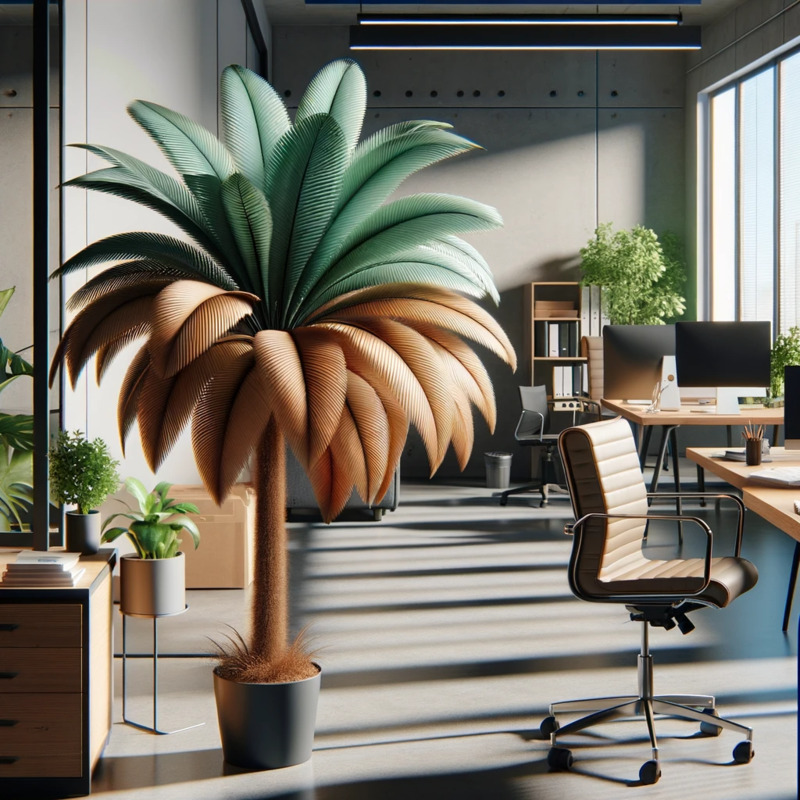
Symptoms of illness or incorrect conditions
When the leaves become ugly, this can be caused by all sorts of reasons, or multiple reasons together. The most common reasons are: The plant receives too much water, or too little water. The plant has a lack of nutrients. The humidity is too low (e.g. in a heated room)
Too much water, or too little water
If you stick your finger a few centimeters into the soil you can feel if the soil is too dry or too wet. If it is too wet we advise you to find a solution to make the soil drier. This can be done by making holes in the pot so that the soil can leak, or by replacing some of the soil with dry soil, as a stopgap.
Lack of nutrients
In some cases you can assume that the plant has a shortage of nutrients. This applies when you have used old soil for the plant that has already been used by other plants, or when you have used poor soil, such as coconut soil. Coconut soil is not suitable for the . And if you have never given extra nutrition, it is likely that the plant is undernourished, depending also on the size of the plant. A large plant needs more nutrition than a small one.
Too low humidity
You can assume that the humidity has to do with the condition of your when it is in a heated room, or in a room with air purification/air conditioning. The likes humid environments, so you will have to move the plant, or turn the plant off.
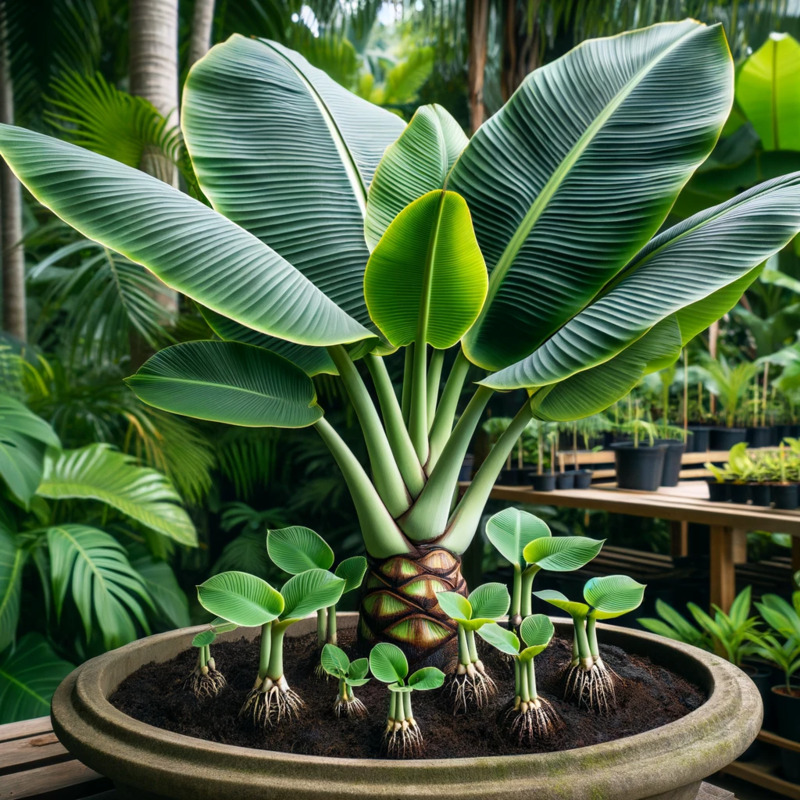
How to propagate the Musa basjoo?
The banana plant can be propagated by cuttings. You can carefully separate the small pups that grow next to the mother plant and place them in their own pot with fresh potting soil. Make sure that the pup has enough roots before you separate it from the mother plant. It is best to do this in the spring or summer, when the houseplant is vital. Give the cuttings some extra care, such as a moist and warm environment, to let them grow well. Cutting the banana plant can help you have more of these beautiful plants in your home and makes for a nice addition to your interior.
What is the best way to protect the Musa Basjo in winter?
In this chapter we explain how you can best protect the Musa basjo during the winter months.
In the following 3 steps we will explain how to get your Musa Basjo safely through the winter months.
Step 1
Cut off all leaves from the desired trunk height, for example at 1 meter trunk height.
Step 2
Now wrap the trunk of the musa basjo.
You do this by putting gauze around it and filling it with hay.
It is also very important that you protect the soil well. This can best be done by placing old leaves on the ground around the Musa Basjo.
Step 3
Now wrap the trunk by placing fleece over the mesh.
Then put a layer of bubble wrap on top so that no water can drip onto the musa basjo.
This is very important because otherwise the musa basjo can rot.
And that's it.
As soon as spring comes again, everything can be removed and if the trunk has not become a mess, the Musa Basjo can grow back from its trunk.
*if the trunk of the musa basjo has become a mess, you can wait until the end of the month and the musa basjo will simply grow back as a tuber.
Additional information about the winter hardiness of the Musa Basjo
If you have the Musa Basjo in the open ground, it can also survive without protection. It is best to only try this when the trunk has become a palm thick.
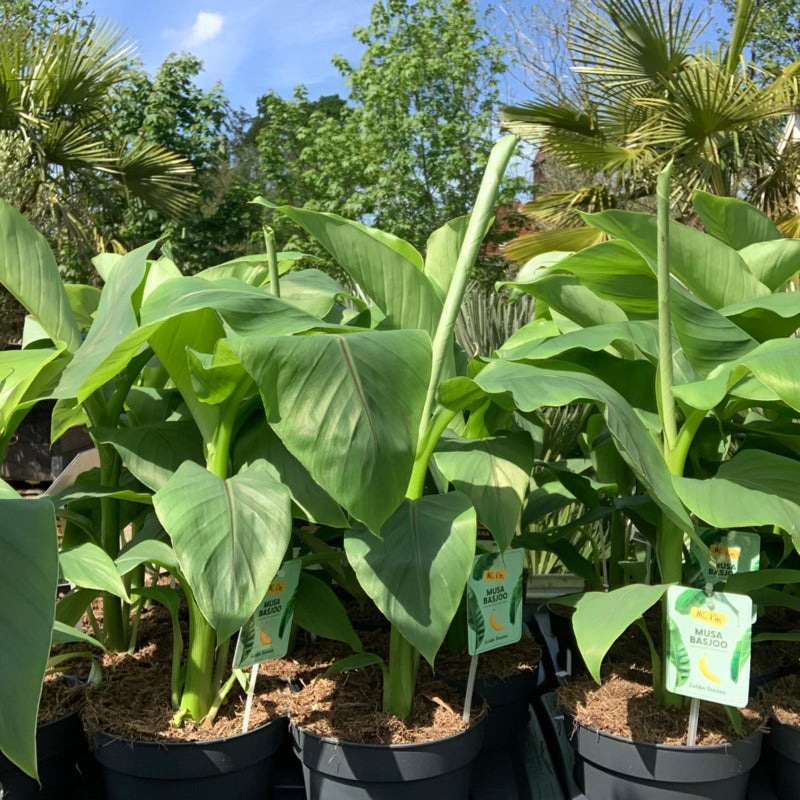

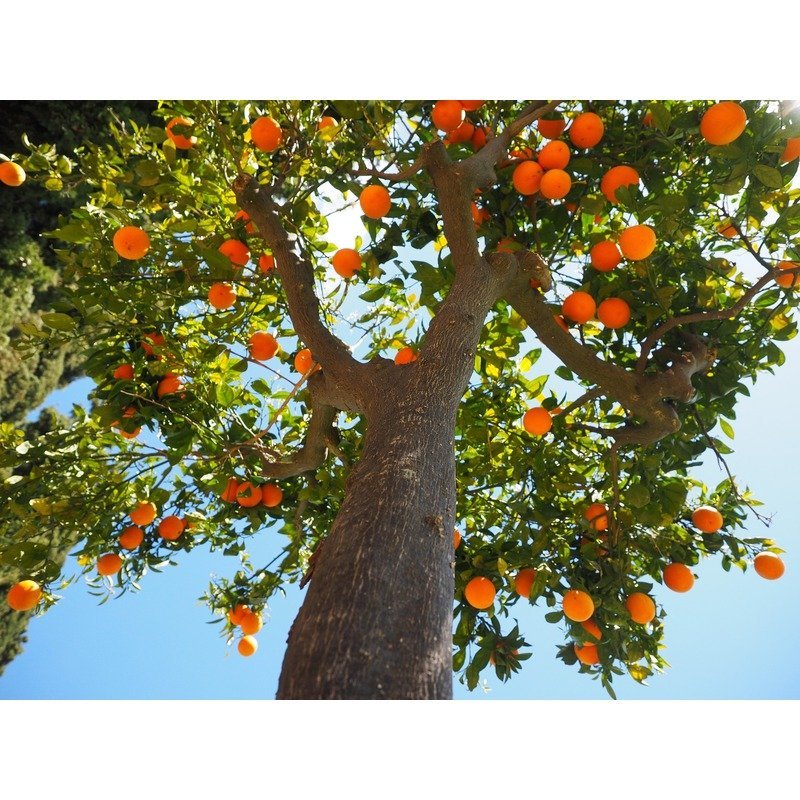
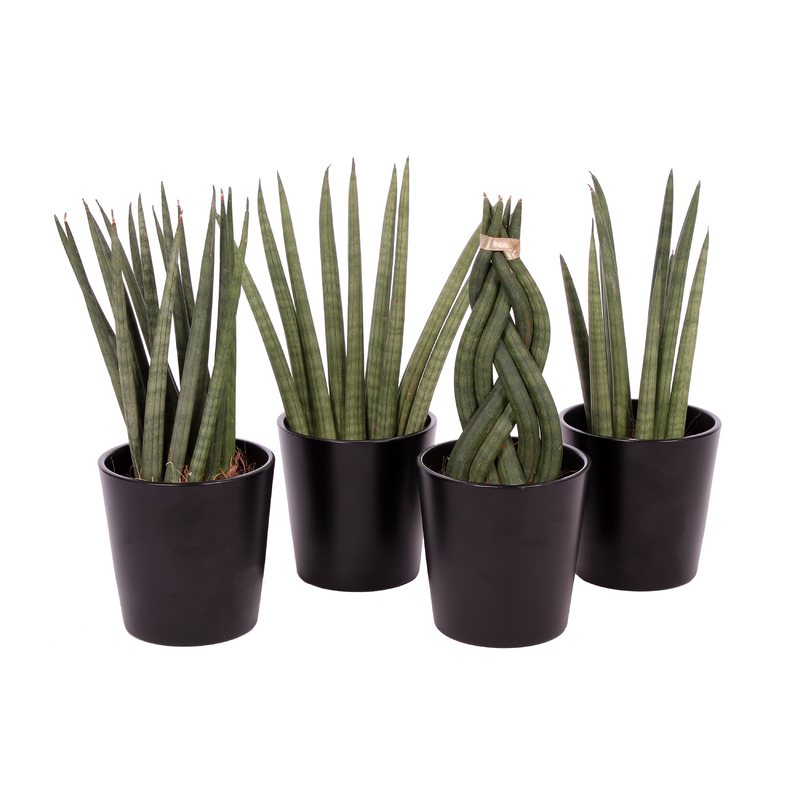
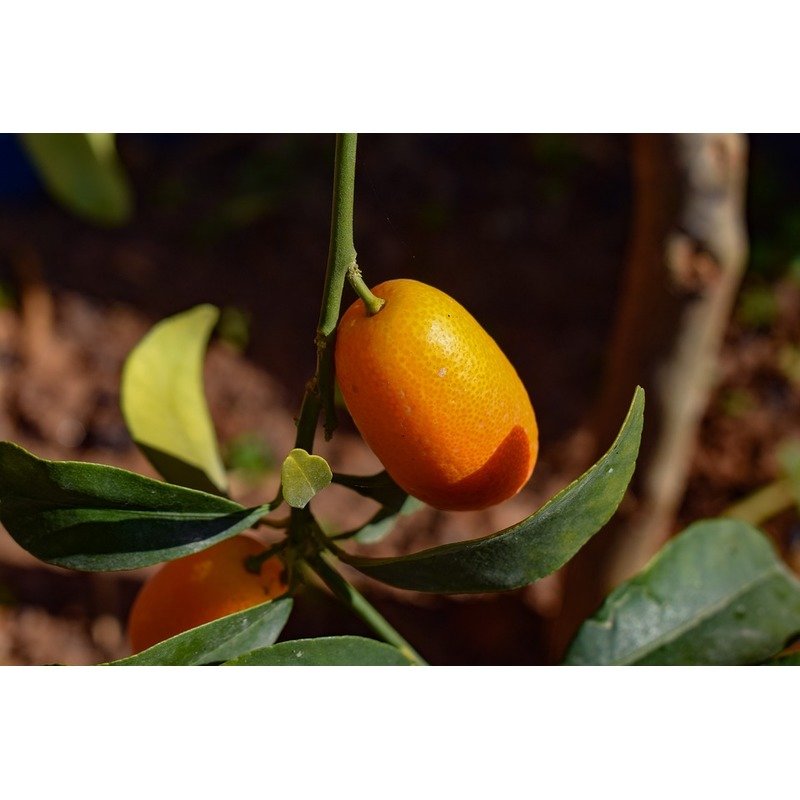
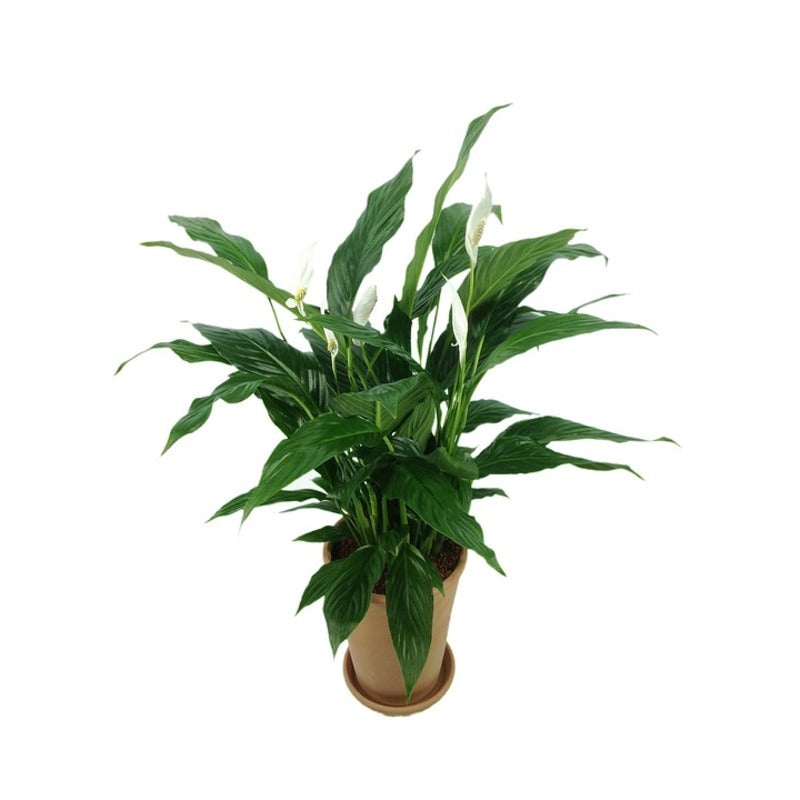
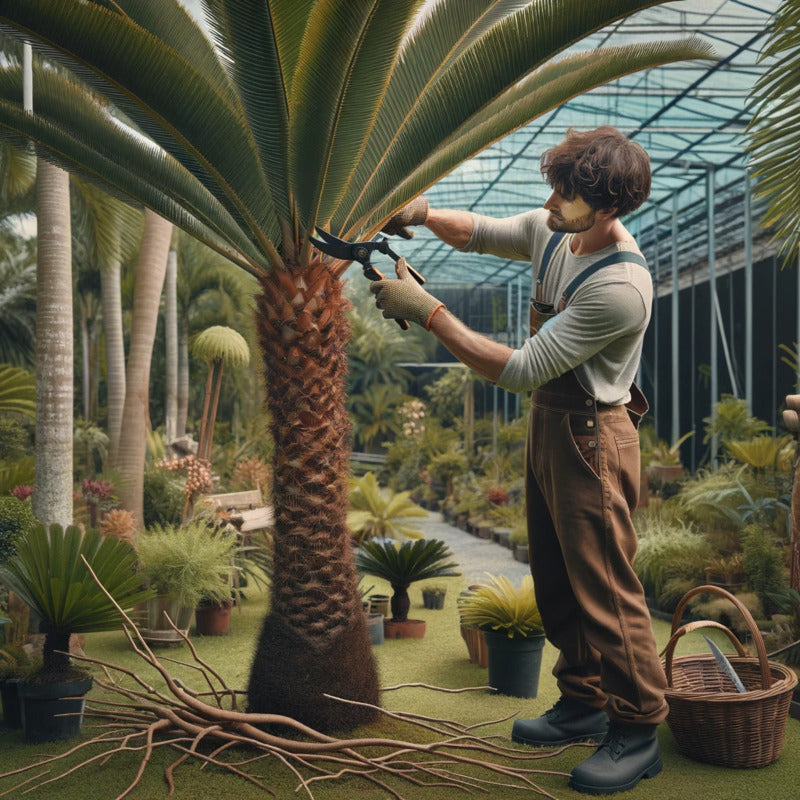
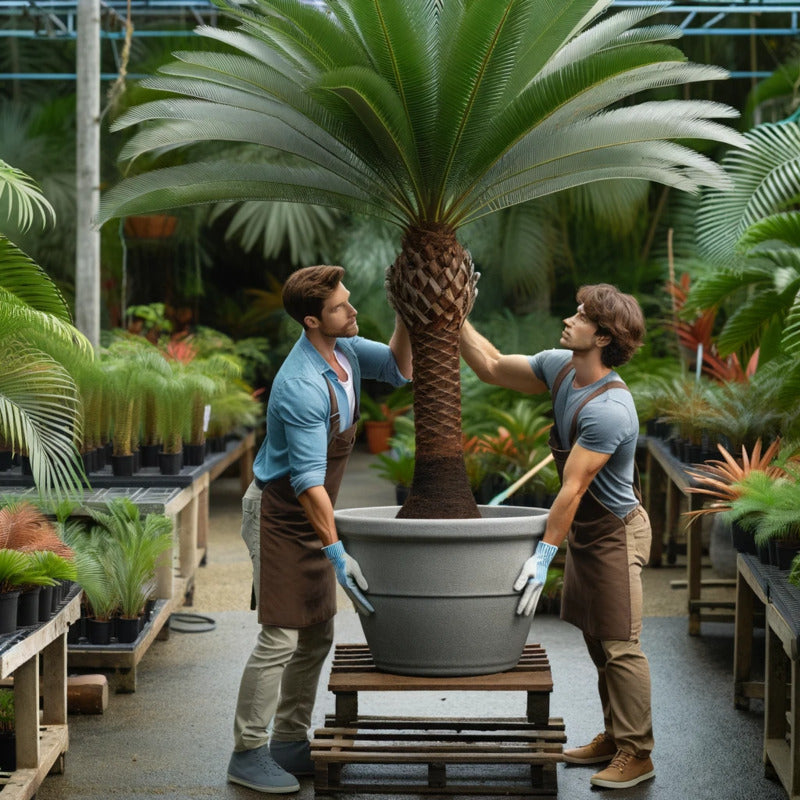

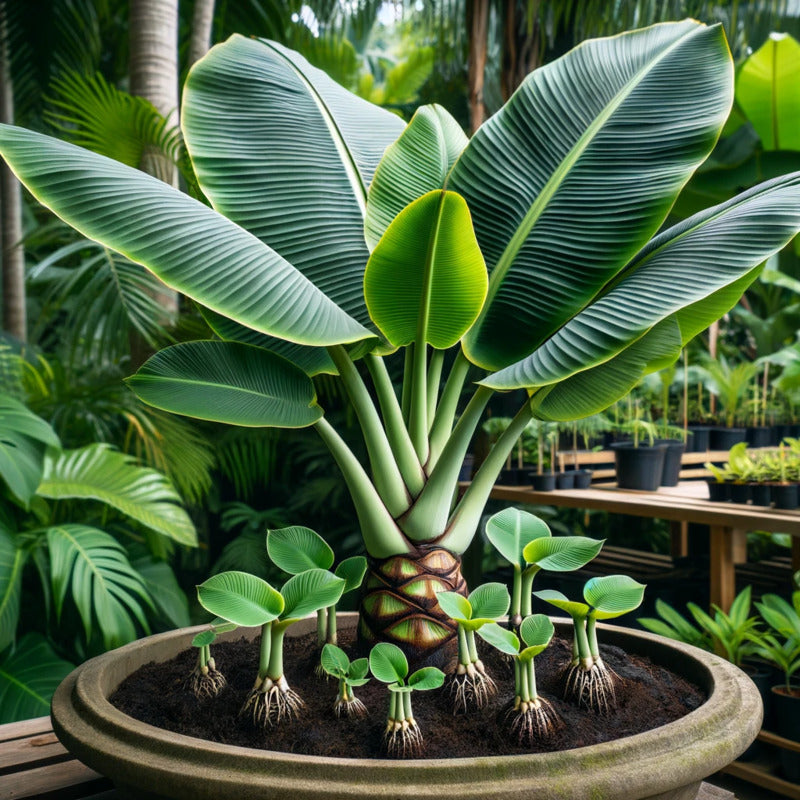

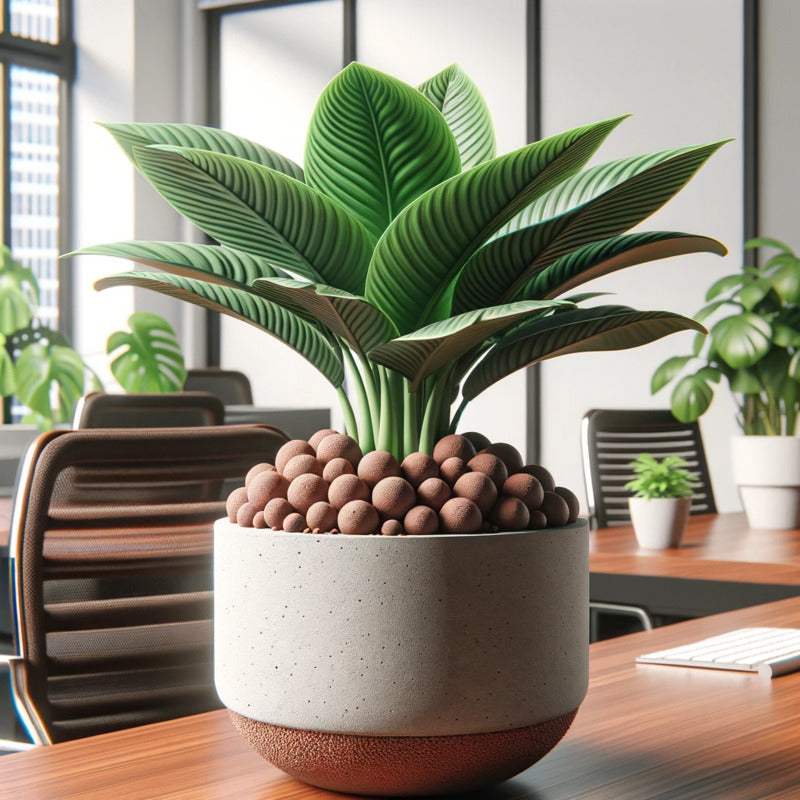

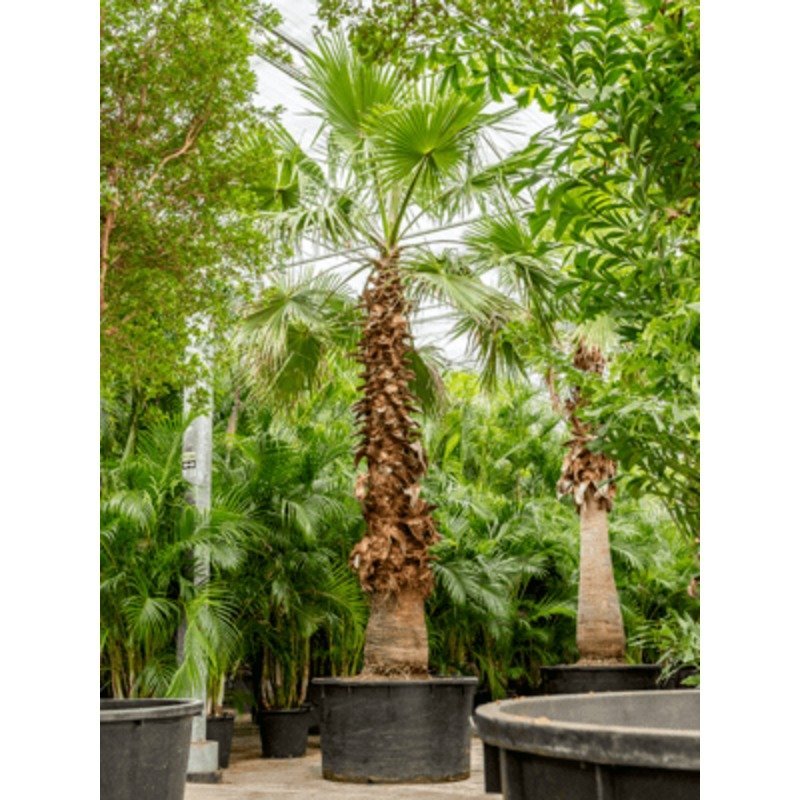
Share:
Lupinus polyphyllus - Various colours
Acacia dealbata - Mimosa - False Sleeper